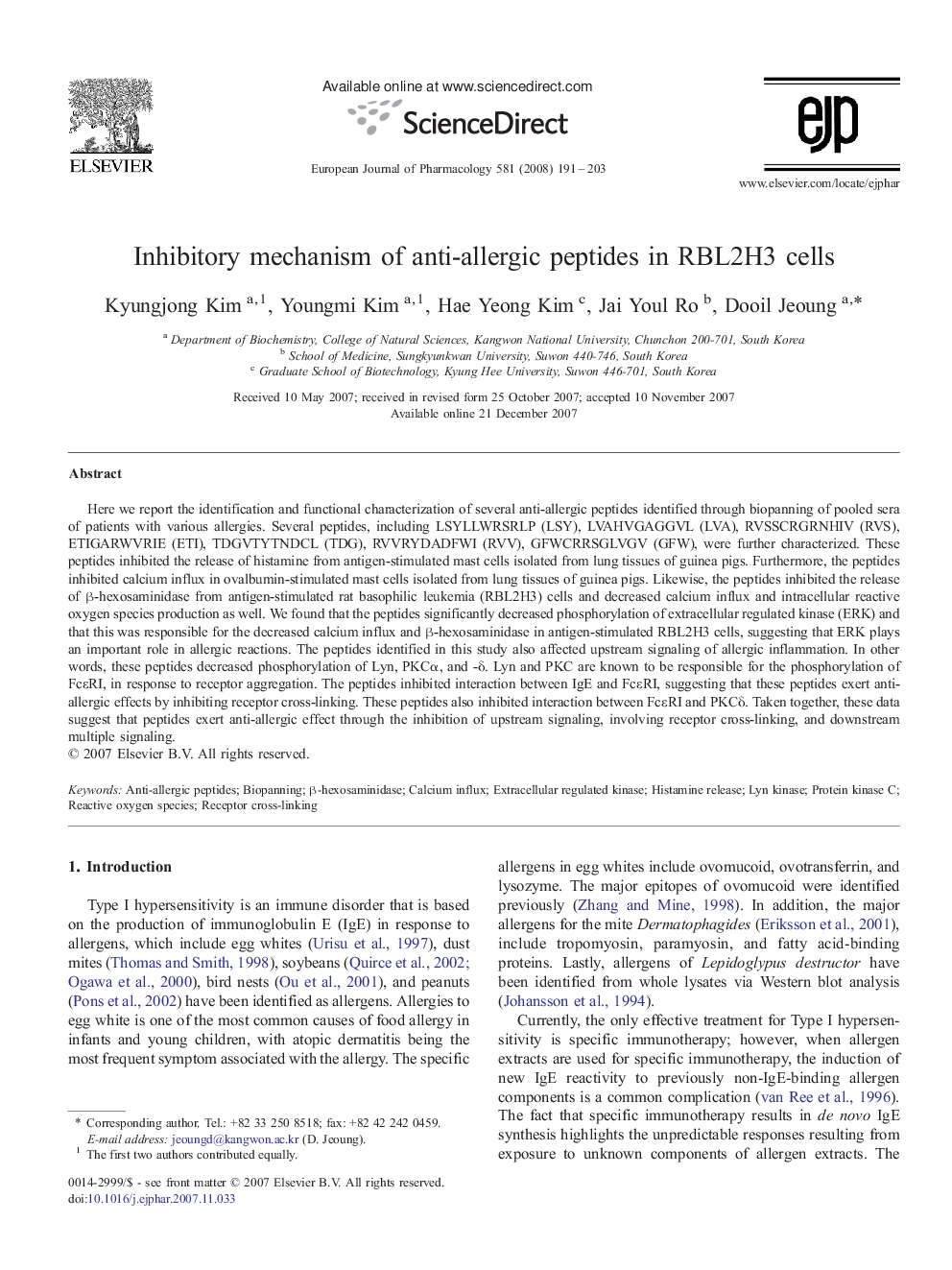| Article ID | Journal | Published Year | Pages | File Type |
|---|---|---|---|---|
| 2535520 | European Journal of Pharmacology | 2008 | 13 Pages |
Here we report the identification and functional characterization of several anti-allergic peptides identified through biopanning of pooled sera of patients with various allergies. Several peptides, including LSYLLWRSRLP (LSY), LVAHVGAGGVL (LVA), RVSSCRGRNHIV (RVS), ETIGARWVRIE (ETI), TDGVTYTNDCL (TDG), RVVRYDADFWI (RVV), GFWCRRSGLVGV (GFW), were further characterized. These peptides inhibited the release of histamine from antigen-stimulated mast cells isolated from lung tissues of guinea pigs. Furthermore, the peptides inhibited calcium influx in ovalbumin-stimulated mast cells isolated from lung tissues of guinea pigs. Likewise, the peptides inhibited the release of β-hexosaminidase from antigen-stimulated rat basophilic leukemia (RBL2H3) cells and decreased calcium influx and intracellular reactive oxygen species production as well. We found that the peptides significantly decreased phosphorylation of extracellular regulated kinase (ERK) and that this was responsible for the decreased calcium influx and β-hexosaminidase in antigen-stimulated RBL2H3 cells, suggesting that ERK plays an important role in allergic reactions. The peptides identified in this study also affected upstream signaling of allergic inflammation. In other words, these peptides decreased phosphorylation of Lyn, PKCα, and -δ. Lyn and PKC are known to be responsible for the phosphorylation of FcεRI, in response to receptor aggregation. The peptides inhibited interaction between IgE and FcεRI, suggesting that these peptides exert anti-allergic effects by inhibiting receptor cross-linking. These peptides also inhibited interaction between FcεRI and PKCδ. Taken together, these data suggest that peptides exert anti-allergic effect through the inhibition of upstream signaling, involving receptor cross-linking, and downstream multiple signaling.
